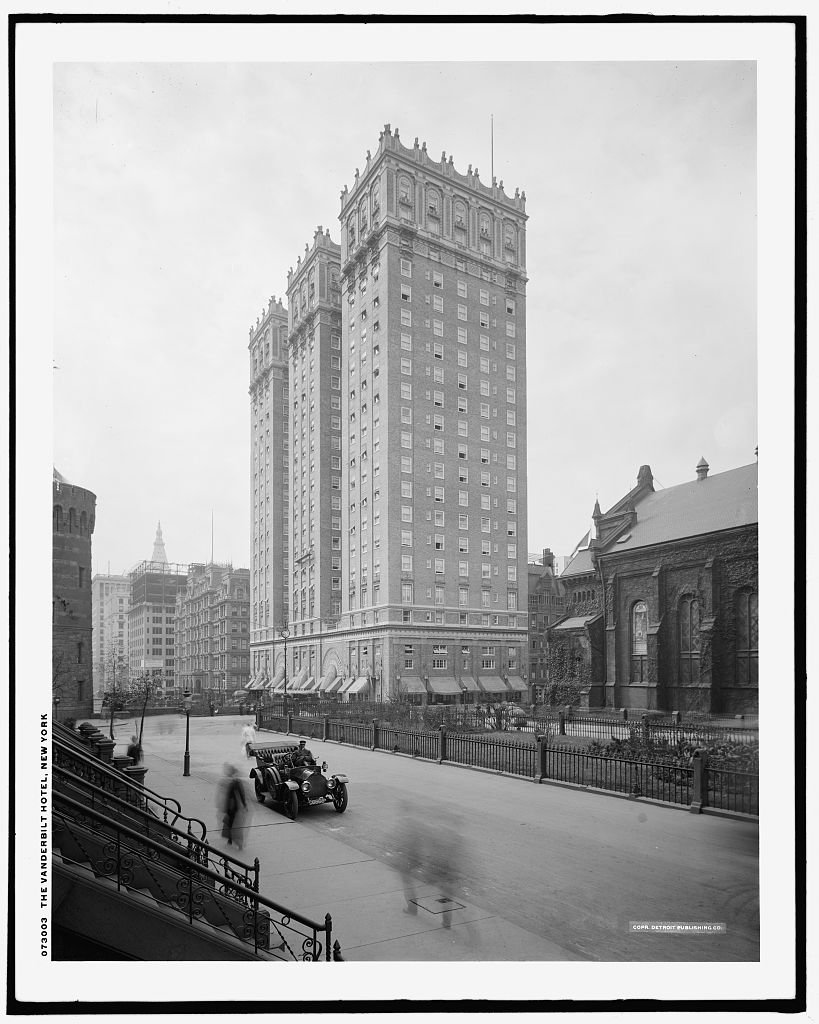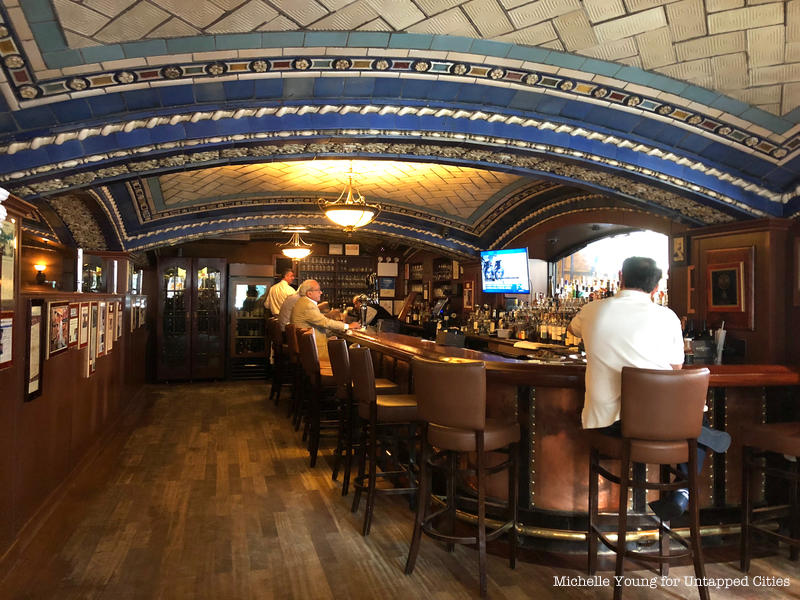3. Vanderbilt Hotel
 Photo via Library of Congress by Detroit Publishing Co.
Photo via Library of Congress by Detroit Publishing Co.
In 1912, Alfred Gwynne Vanderbilt I commissioned Warren and Wetmore to construct a hotel at 34th Street and Park Avenue. Alfred Vanderbilt was the son of third son of Cornelius Vanderbilt II and grandson of Commodore Vanderbilt and he grew up in this stately mansion (whose remnants still abound). While the facade was restrained, with terra cotta flourishes, its interior was full of amenities and state of the art technologies, including pneumatic tubes. The Della Robbia Room was located in the hotel’s basement and was architecturally noted for its Gustavino ceiling.
 Dela Robbia Room
Dela Robbia Room
Vanderbilt had the top two floors of the hotel transformed into a private house for his family. He lived there until 1915 when he tragically died on the Lusitania after giving up his life jacket. Howard Hughes, Ring Lardner, and the famed Italian opera singer Enrico Caruso (who took over Vanderbilt’s suite) all took up residency in the hotel over the years.
In 1925, the Vanderbilts sold the hotel and in 1967, the hotel was converted into a mixed-use building (upper floors apartments and lower floors offices). In 1966, the hotel’s new owners began to remove its fanciful terra cotta and the architects Schuman, Lichtenstein & Claman reclad the lower portion of the building. All was not lost. In 1994, the Della Robbia Bar was designated an interior landmark by the New York City Landmarks Preservation Commission. Some of the terra cotta ended up in the sculpture garden at the Brooklyn Museum, and the majority of the hotel’s facade is still in its original state (originally the plans called for its entire facade to be redesigned).





